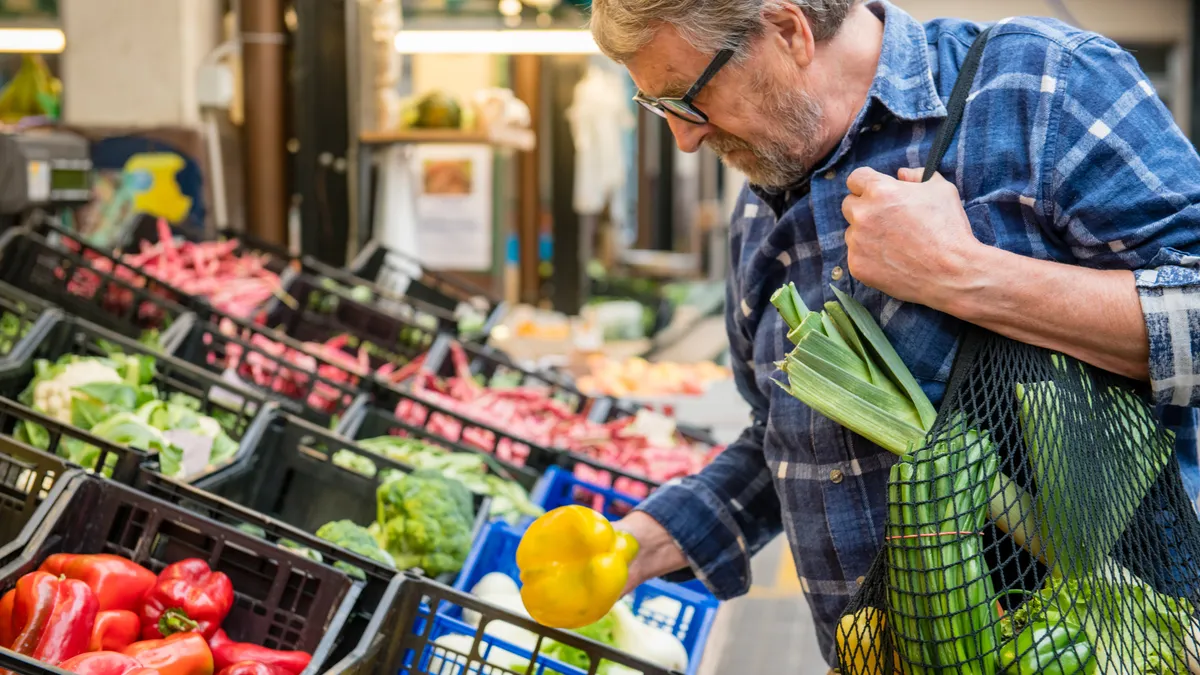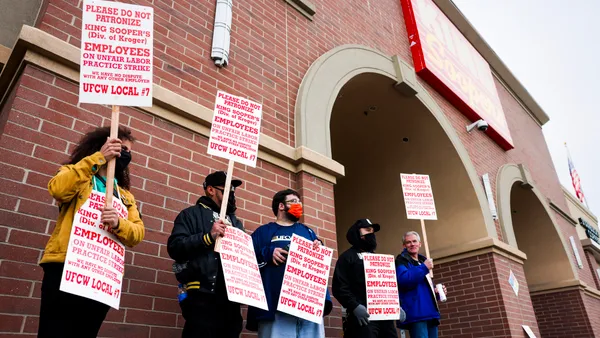Dive Brief:
- U.S. shoppers assumed food-at-home inflation late last year was more than double what it actually was, believing it was at 24.3% in October/November 2022 when it was actually at 12%, according to the latest Dunnhumby Consumer Trends Tracker, released Wednesday.
- Consumers also overestimated grocery retailers’ profitability, estimating they have an average net profit margin of 35.2% when the actual figure is 2.5%, Dunnhumby found.
- The report also nudges grocery retailers to practice “empathetic retailing” as shoppers battle inflation as well as lean into growing trends of e-commerce and health.
Dive Insight:
As inflation continues its steady decline and food-at-home prices rise at a slower rate in January, shoppers still feel the pressure of high prices, prompting them to believe food-at-home inflation and grocery retailers' net profit margins are higher than they actually are, the report notes.
The perceived rate of food-at-home inflation rose 1.5% from a July 2022 survey, despite food-at-home inflation at the time having decreased, further highlighting the trend of consumers believing inflation rates are higher than Consumer Price Index reports show, Dunnhumby notes.
Food-at-home prices rose in January at an 11.3% annual rate, down from 11.8% in December 2022, according to the most recent CPI report from the federal government.
While the percentage of consumers who reported they would struggle to cover an “unexpected expense” of $400 decreased to 60% in October/November 2022 from 64% in July 2022, food insecurity is a heightened concern, according to Dunnhumby. Thirty-one percent of households reported skipping or reducing meal sizes for financial reasons, and households with children were 8% more likely to do so.
Having healthy choices at grocery stores is increasing in demand, Dunnhumby found, with 44% of consumers reporting it was very or extremely important for grocery retailers to help them make healthy choices, up 3% from the July survey. However, for 60% of shoppers, the price of healthy options stands in their way, increasing the demand for affordability in this area.
Ease, reliability and convenience are also at the top of consumers' minds, according to Dunnhumby, as 81% of shoppers surveyed said “easy to shop” websites and apps are important to them and 78% want grocers to have more convenient delivery and pick-up time slots. Consumers 55 and older are reported to value the convenience of grocers’ websites and apps while families with children are 16% more likely to use a store’s app and have a 10% greater need for them.
A number of grocers have worked to streamline their online sites for consumers, with ShopRite, for example, adding online filters to help shoppers choose products and recipes.
To bridge the gap between grocery retailers and shoppers, specifically in regard to customers’ perceptions of inflation and store profit margins, Dunnhumby points to the need for empathetic retailing, meaning grocers should show shoppers they are “on their side” through messaging, pricing and personalized offers and rewards.













